The end of summer and start of fall has seen the release of several books that qualify as major entries in film studies—specifically Fun City Cinema and Inland Empire—along with some wild, wooly appreciations for the likes of Shaun of the Dead and Kevin Smith. Read on for details about these and much more.
Fun City Cinema: New York City and the Movies That Made It by Jason Bailey (Abrams Books)
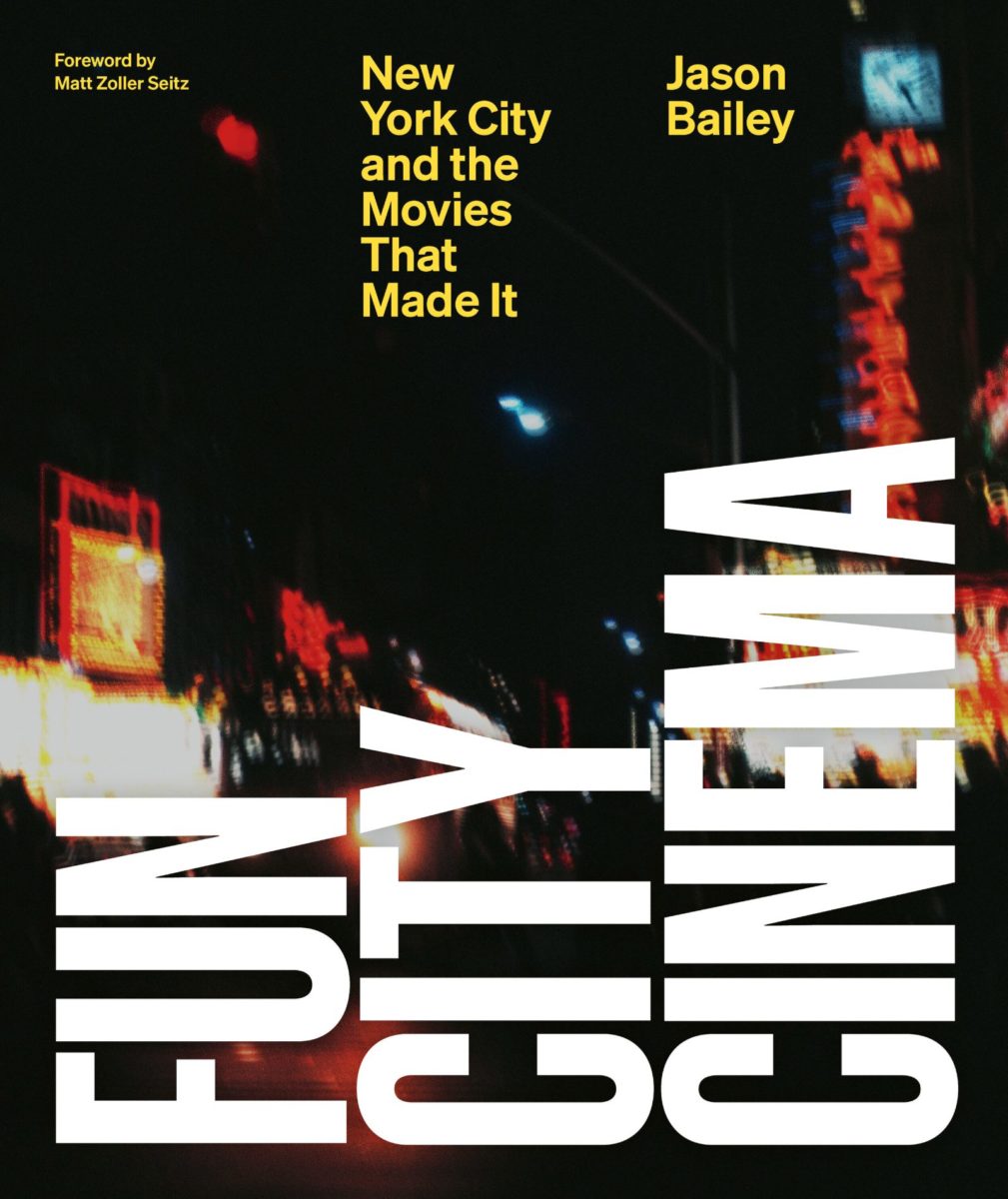
Billed as a visual history of a century of filmmaking in New York City, Fun City Cinema is the book NYC deserves, Jason Bailey without question the right author for the job. As he showed in books on Richard Pryor and 1970s detective pictures, Bailey is adept at analyzing why certain films and individuals make such a deep impact on the cultural and artistic landscape. Fun City Cinema might be his most ambitious yet—large-scale, photo-heavy, and featuring not just the likes of Midnight Cowboy and Taxi Driver, but also films like delightful 1953 oddity Little Fugitive, Claudia Weill’s groundbreaking Girlfriends, even Bill Murray’s Quick Change. Here is Bailey on the lattermost, specifically the links between Murray’s makeup-clad bank Robber and Jason Robards’ chief of police: “These two men may be on opposite sides of the law, and in the midst of perhaps the most stressful situation of their lives. And yet they’re bound by two things: They hate the city, and they can’t believe anyone is trying to change it.”
Inland Empire by Melissa Anderson (Fireflies Press)
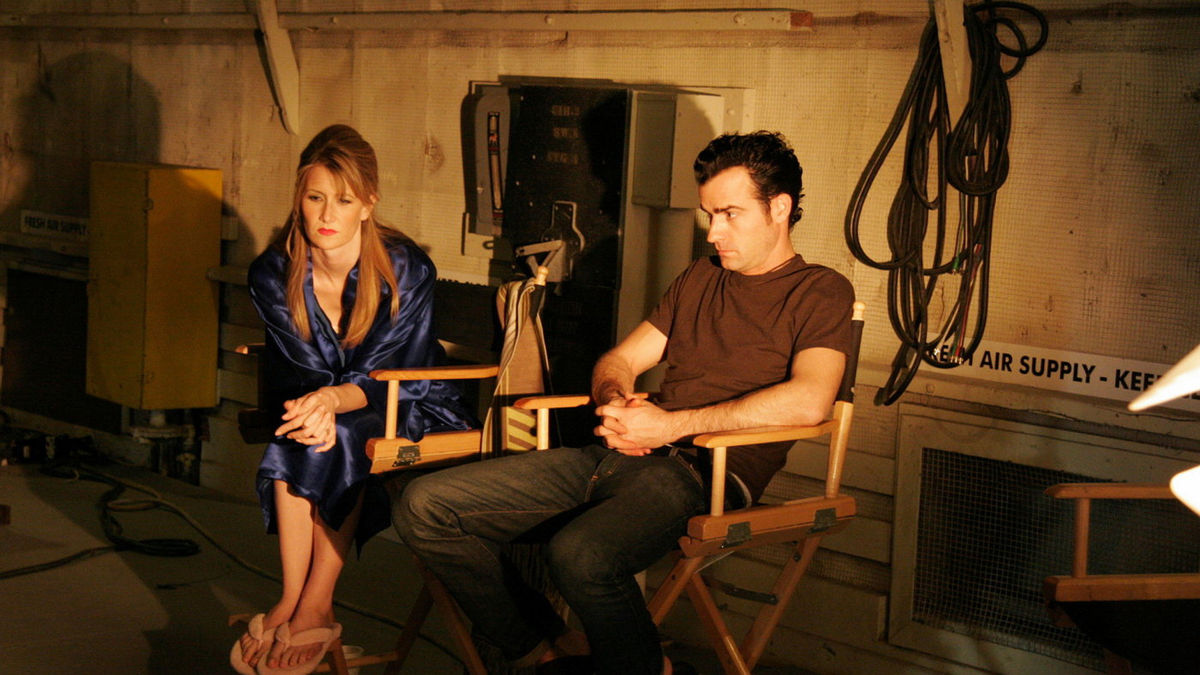
One of the more welcome debuts in 2021 has been Fireflies Press’ Decadent Editions, a 10-book series on one films for each year of the 2000s. Following breathtaking studies of Goodbye, Dragon Inn and Ten Skies comes Melissa Anderson’s tremendously profound consideration of David Lynch’s Inland Empire. While Anderson discusses Empire’s place in the Lynch oeuvre, she finds the more astute path to understanding is centered on star Laura Dern—“through the lens of ‘acteurism.’” In Empire, “the most free-associative, nonlinear movie in the director’s singular corpus, the actress must repeatedly perform the fragmenting or slippage of multiple identities.” It is a performance wherein Dern must “consistently fall apart but not completely shatter.” Anderson ties the Oscar winner’s work here to her earlier Lynch roles, as well as the position occupied by actors like Dern in post-Weinstein Hollywood. She provides Dern—and the all-too-often unheralded Inland Empire—with much-deserved appreciation.
You’ve Got Red on You: How Shaun of the Dead Was Brought to Life by Clark Collis (1984 Publishing)
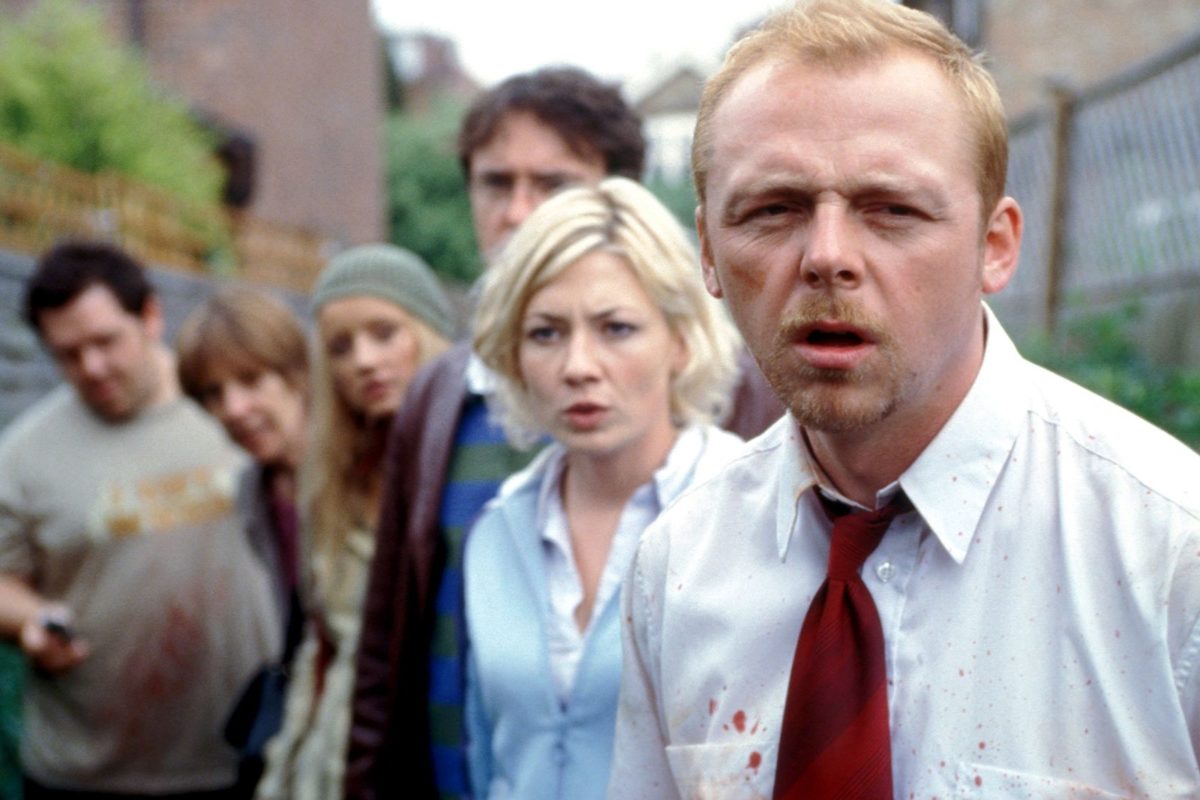
Edgar Wright is in the news thanks to the release of Last Night in Soho, making You’ve Got Red on You‘s publication quite timely. While Soho already has its admirers—as do Hot Fuzz, Scott Pilgrim vs. the World, The World’s End, Baby Driver, and The Sparks Brothers––2004’s Shaun of the Dead is hard to top. Author Clark Collis tracks Wright’s An American Werewolf in London-loving youth in England and eventual friendship with Simon Pegg and Nick Frost, as well as the film’s complicated journey to production; its first 150 pages cover the writing, casting, and financing process. Collis describes the shooting of Shaun with great humor and delightful detail, and he shrewdly explains the zombie comedy’s legacy. Plus, Wright is given the chance to share Martin Scorsese’s favorite line from the film. (I won’t spoil it.)
The Boys: A Memoir of Hollywood and Family by Ron Howard and Clint Howard (William Morrow)
It should come as no surprise that a memoir from brothers Ron and Clint Howard is modest, likable, and self-effacing; the Oscar-winning director and character actor, respectively, always come across, onscreen and off, as modest, likable, and self-effacing. Ron and Clint alternate chapters and offer their individual points-of-view, an idea Ron says came from Da Vinci Code author Dan Brown. This approach is wise, allowing readers to appreciate Clint’s life and career on its own terms, rather than focusing only on his hugely successful brother. There is a deep love and respect evident between Ron and Clint, and for their parents. It makes for a downright refreshing read.
But What I Really Want to Do Is Direct: Lessons from a Life Behind the Camera by Ken Kwapis (St. Martin’s Griffin)
Another likable memoir is But What I Really Want to Do Is Direct from Ken Kwapis, a veteran TV director (The Office, The Larry Sanders Show) who has also helmed features like A Walk in the Woods and The Sisterhood of the Traveling Pants. (As well as Sesame Street Presents: Follow That Bird, one of 1985’s finest films. Seriously!) The book is a mix of behind-the-scenes stories and advice for budding filmmakers. The most memorable section is Kwapis’ first-hand account of the test screening process, ending with the surreal account of testing a Showtime pilot he produced starring the late Philip Seymour Hoffman. It, um, was not well-received: “Hoffman having sex with a cartoon grandmother was not to everyone’s taste.”
Kevin Smith’s Secret Stash: The Definitive Visual History (Classic Movies, Film History, Cinema Books) by Kevin Smith, edited by Chris Prince (Insight Editions)
Say what you will about the films of Kevin Smith: there is no denying his achievement in crafting an entire universe from his personality, interests, and sense of humor. That is abundantly clear from Kevin Smith’s Secret Stash, a jolly jaunt through the entirety of his career. The coffee-table book is stuffed with pull-outs—a prop box for Mooby’s hash browns, Smith’s Vancouver Film School application, an invite to the Jersey Girl premiere—and written by Smith with charming self-deprecation. Speaking of self-deprecation, let’s allow Ben Affleck to have the last word, with a highlight from an Affleck-authored insert titled “Who Is Kevin Smith?”: “I could fill the pages of this book with the details of the time we worked together, but I’m not much for sharing personal stories, and Kevin has already milked each story for every nickel it was worth on stage, on DVD, on SModcast, and to basically anyone who would throw a nickel in his hat on the subway platform—so I’m sure you’ve heard them before.”
Hollywood Shutdown: Production, Distribution, and Exhibition in the Time of COVID and Below the Stars: How the Labor of Working Actors and Extras Shapes Media Production by Kate Fortmueller (University of Texas Press)
Major kudos to Kate Fortmueller, assistant professor in the Department of Entertainment and Media Studies at Grady College of Journalism & Mass Communication at the University of Georgia, for authoring what must be one of the first (if not the first) books about the impact of COVID-19 on film and television production. Hollywood Shutdown covers how and why the production, distribution, and exhibition of entertainment has shifted so dramatically. Fortmueller explains that because of the pandemic’s ongoing nature, she “did not have the kind of temporal and emotional distance from my subject that is usually part of the writing process.” But this perspective serves to make Shutdown even more vital as an in-the-moment chronicle of how Hollywood responded to COVID. Just as important is another new book by Fortmueller, Below the Stars. Given the recent stories surrounding Hollywood and its unions, her look at the place occupied by working actors and extras in the film industry could not be more timely.
Illuminating two innovators: Jean-Pierre Melville and Alain Resnais

The subjects of Honor Among Thieves: The Cinema of Jean-Pierre Melville (Contra Mundum Press; by Andrew Dickos) and Alain Resnais: Interviews (University Press of Mississippi; edited by Lynn A. Higgins and translated by T. Jefferson Kline) passed away in 1973 and 2014, respectively. Melville and Resnais were and are still associated with the French New Wave, and both books successfully analyze the filmmakers’ relevance in that era and beyond. In Honor Among Thieves, Dickos keys in on the pathos of Melville’s existential heroes in films like Le Samouraï and Le Cercle Rouge. Meanwhile, Resnais, part of the long-running Conversations with Filmmakers series, allows the director of Hiroshima mon amour and Last Year at Marienbad to explain, in his own words, how he attempted to make films about “something that is universally necessary to mankind.”
TCM tackles summer movies, noir, and WWII
In addition to being the only TV network that truly matters for cinephiles and old-movie buffs, Turner Classic Movies also releases books through publisher Running Press. Most notable is Hollywood Victory: The Movies, Stars, and Stories of World War II by Christian Blauvelt. It is an essential text that shows Hollywood’s involvement in World War II from multiple perspectives. From the death of Leslie Howard to the presence of key film stars on D-Day, Blauvelt both uncovers new tales and reinvigorates old ones. On the lighter side is Summer Movies: 30 Sun-Drenched Classics by John Malahy, which includes some obvious “sun-drenched” classics like State Fair and Beach Blanket Bingo, but also Caddyshack, A Room With a View, and Moonrise Kingdom. Even a few dramas, like Breaking Away and Do the Right Thing, make the list. And Dark City: The Lost World of Film Noir by Eddie Muller is a gritty tour of a cinematic landscape filled with locations like “Hate Street,” “Vixenville,” “Losers’ Lane,” and, of course, “The Big House.” It’s full of gorgeous stills, on-set photos, and stunning posters for films like Detour, D.O.A., and The Blue Dahlia.
Odds and ends: The story of Disney World, the fall of WeWork, literary miscellany, designing Star Trek, and Trejo remembers
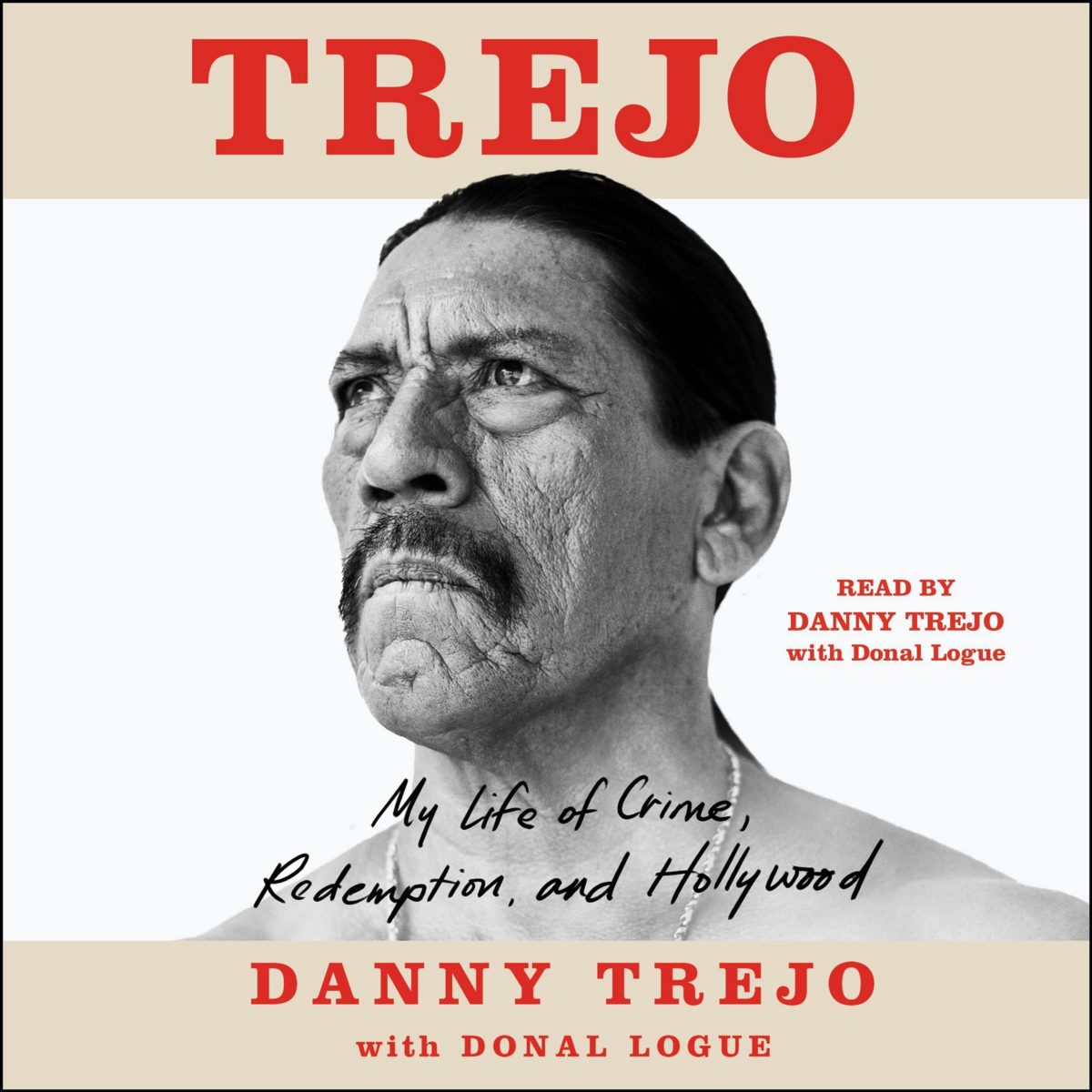
My family ended summer 2021 with a vacation to Walt Disney World, and afterwards I became intrigued with exploring how it came to be. The entire complex process is explained in Aaron H. Goldberg’s wildly involving account Buying Disney’s World: The Story of How Florida Swampland Became Walt Disney World (Quaker Scribe). You may have watched the Hulu documentary WeWork: or The Making and Breaking of a $47 Billion Unicorn. An even better investigation is The Cult of We: We Work, Adam Neumann, and the Great Startup Delusion (Crown), by Wall Street Journal reporters Eliot Brown and Maureen Farrell. In addition to detailing the wild story of Neumann and his failed office space provider, the authors zero in on the startup bubble and “Silicon Valley’s hype machine, where innovation and disruption were ascendant and critical questions were often dismissed as obnoxious cynicism.” Mental Floss: The Curious Reader: A Literary Miscellany of Novels & Novelists (Weldon Owen), edited by Erin McCarthy, is packed with “did-you-know” tidbits on authors as diverse as Jane Austen (“Some believe Austen’s death was a result of being poisoned”), Kazuo Ishiguro (“His portrait once hung at 10 Downing Street”), and Aldous Huxley (“He was almost completely blind as a teenager”). Dan Chavkin and Brian McGuire’s Star Trek: Designing the Final Frontier: How Midcentury Modernism Shaped Our View of the Future (Weldon Owen) looks at how the modern design movement impacted props, sets, and furniture on Gene Rodenberry’s series. And Trejo: My Life of Crime, Redemption, and Hollywood (Atria Books), an autobiography co-written by Danny Trejo and actor Donal Logue (?), is moving and entertaining. The Machete star’s life has not been easy, making his story of eventual success all the more resonant.
Animation analysis and considering comic books: Looney Tunes’ history, Vivo art, and exploring Marvel and DC favorites
With a Space Jam sequel in theaters and on HBO Max, as well as a new line of LEGO minifigures (my son will happily tell you all about them), Looney Tunes characters were back in a major way during summer 2021. The capper to this activity is Jaime Weinman’s Anvils, Mallets & Dynamite: The Unauthorized Biography of Looney Tunes (Sutherland House). This deeply enjoyable book charts all things Looney from the 1920s to the present day while also smartly breaking down the elements that make cartoons featuring Bugs Bunny and pals so recognizable and iconic. Ramin Zahed’s The Art of Vivo (Abrams Books) is a lovely companion to the Netflix animated musical, offering character designs and behind-the-scenes details. Finally, Kelly Knox’s Marvel Monsters: Creatures of the Marvel Universe Explored (DK) is a kooky catalog of well- and lesser-known comic book beasts like Groot and Fin Fang Foom, and The DC Comics Encyclopedia (New Edition) (DK) profiles more than 1,000 (!) characters.
Ridley reads: The Last Duel and House of Gucci

A year with two new films from Ridley Scott is something to be cherished; even if the quality of the man’s work varies, the importance of it does not. And when a Scott film is based on a novel or non-fiction book, I’ve enjoyed reading the texts prior to seeing the film. (This has been the case for Hannibal, Matchstick Men, A Good Year, and The Martian.) Both Eric Jager’s The Last Duel: A True Story of Crime, Scandal, and Trial By Combat (Crown) and Sara Gay Forden’s The House of Gucci: A Sensational Story of Murder, Madness, Glamour, and Greed (Custom House) were noteworthy reads long before trailers dropped for Scott’s 2021 adaptations. Yet each is infinitely more noteworthy in light of the films’ release. Even critics who found issues with The Last Duel agree its story of a 14th-century scandal and ensuing duel is gripping; Jager’s book unquestionably adds helpful context. And Forden’s Gucci is an extraordinary bit of fashion-house soap opera.
New novels coming to screens big and small
David Leitch’s Bullet Train, a Japan-set action-thriller starring Brad Pitt, is set to be released in April 2022—just a few months after the release of Kotaro Isaka’s novel Bullet Train (The Overlook Press). The story of five assassins who collide on a train from Tokyo is compulsively readable; it is easy to see why the book was a huge hit in Japan. A television adaptation is already in the works for Alex Michaelides’s The Maidens, a recent bestseller that has justifiably drawn comparison to Donna Tartt’s The Secret History. Just as gripping as Michaelides’ story of a secret society at Cambridge University is his previous novel, 2019’s The Silent Patient (Celadon Books); Annapurna is already at work on an adaptation of the twisty thriller. A TV series based on Megan Abbott’s The Turnout (G.P. Putnam’s Sons), a gripping and dark drama set at a ballet school, is en route from eOne. And Elisabeth Moss will star as the title character in a film based on Mrs. March (Liveright), author Virginia Feito’s psychological thriller. Moss is an ideal choice to play a woman who believes her novelist husband may have based his latest character—described as a “horrible housewife”—on her.
New to Blu: A magical Potter, Cronenberg’s Dead Zone, Kubrick in 4K, and Neil Jordan’s breakthrough
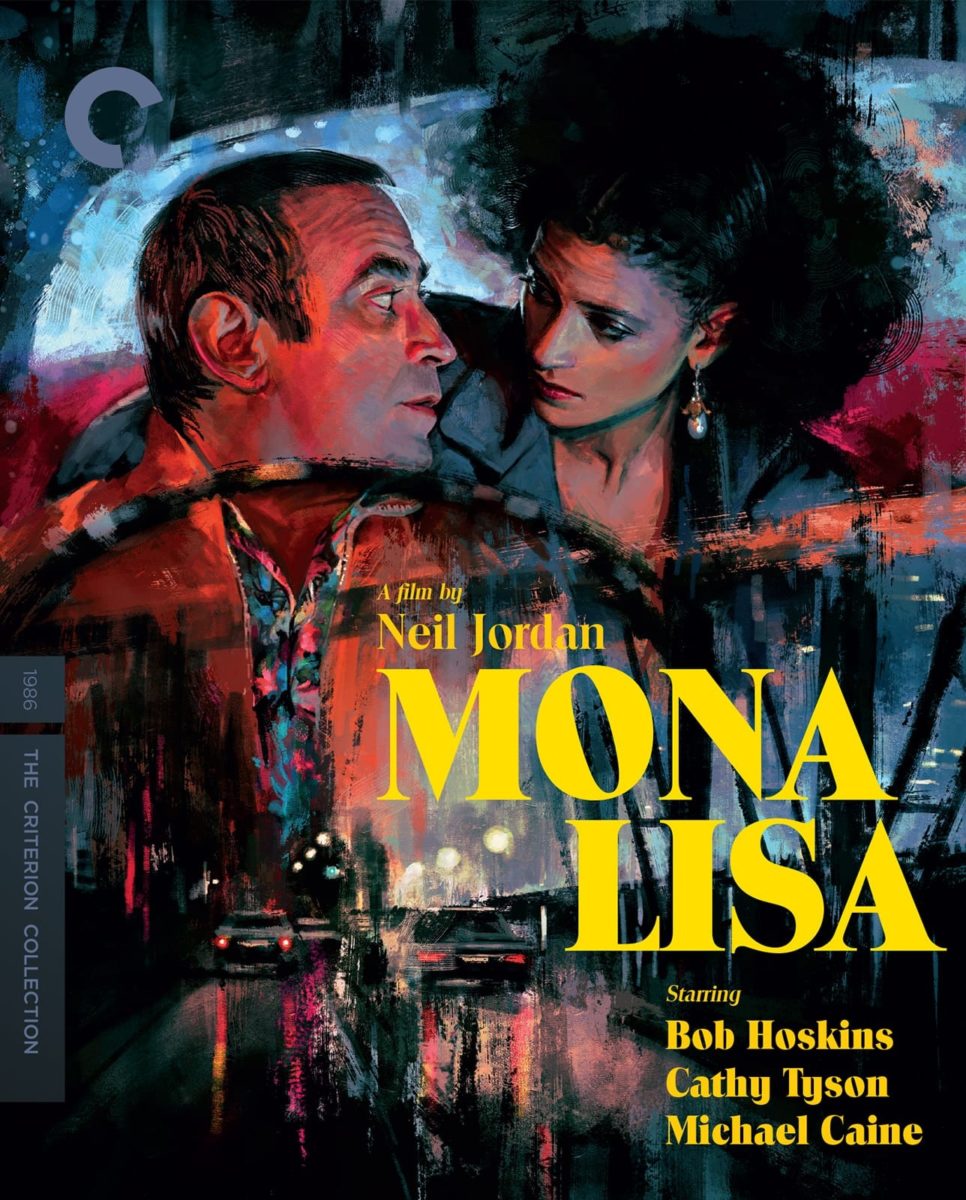
A few recent Blu-ray releases of interest to those who follow the links between book and cinema include: Harry Potter and the Sorcerer’s Stone: Magical Movie Mode (Warner Bros. Home Entertainment), which, for the film’s 20th anniversary, features “Pop-Up Video”-esque tidbits and quizzes; The Dead Zone (Shout Factory), the long-awaited 4K restoration of David Cronenberg’s Stephen King adaptation starring a never-better Christopher Walken, featuring a wealth of bonuses; A Clockwork Orange (Warner Bros.Home Entertainment), a glorious 4K re-release of Stanley Kubrick’s still-unsettling Burgess adaptation that is stuffed with features; and Mona Lisa (Criterion), Neil Jordan’s bittersweet London crime drama. This edition includes a potent essay from critic Ryan Gilbey, who writes that the Bob Hoskins- and Cathy Tyson-starrer “showcased the sensitivity to race, gender, and sexuality that Jordan would later bring to The Crying Game and Breakfast on Pluto, along with his skill at fusing pulp and poetry.” It also must be noted that this release features one of the loveliest Criterion covers to date, by Alice X. Zhang. It is a perfect cover, for a perfect film.
Coming Soon
Another column, featuring even more new and recent releases, is on the way soon, including a look at the making of No Time to Die; deep dives into the lives of Herman & Joe Mankiewicz and the history of 20th Century-Fox; a revised edition of Tarantino: A Retrospective; a mammoth visual history of Jurassic Park; new novels from Jonathan Franzen and Sally Rooney; and a flurry of music-related releases, including looks at Prince, the Rolling Stones, and Wu-Tang Clan, as well as a new memoir from Stevie Van Zandt, a.k.a., Little Steven.
